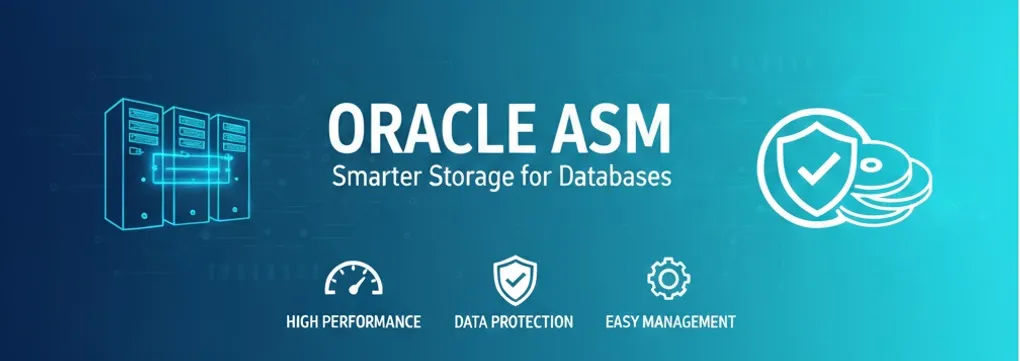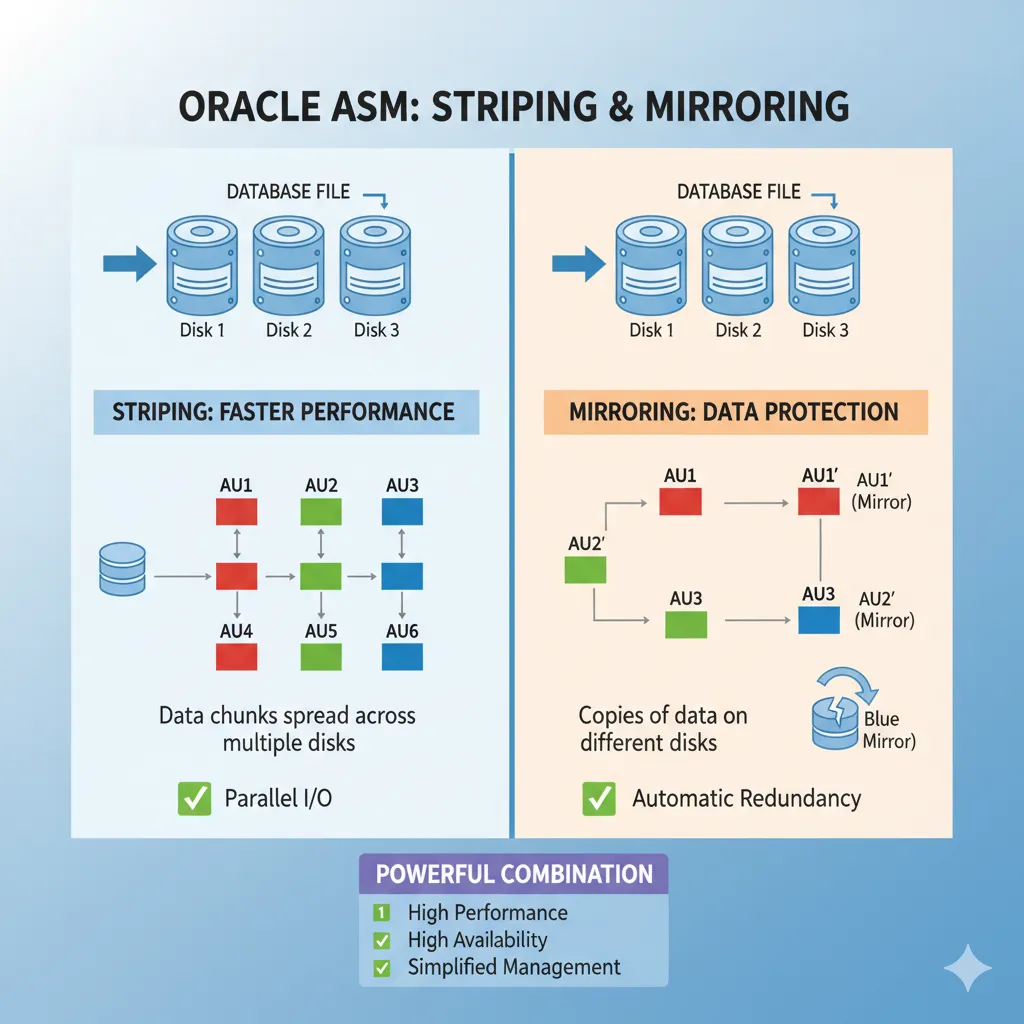
ASM Striping and Mirroring
When managing databases, two critical challenges always come up: performance and data protection. Oracle ASM (Automatic Storage Management) directly addresses these through striping and mirroring. Let’s break these concepts down in practical terms without going into DBA-only jargon.
What is Striping?
Striping is about spreading data across multiple disks instead of writing all data into a single disk.
- How it works in ASM:
ASM divides files into small chunks called allocation units (AUs). These AUs are evenly distributed across all available disks in the disk group. - Why it matters:
Multiple disks can be read or written to in parallel, which improves I/O performance.
Example:
Suppose you have three disks (Disk1, Disk2, Disk3). A database file isn’t placed entirely on Disk1; instead, its chunks are distributed like this:
AU1 → Disk1 AU2 → Disk2 AU3 → Disk3 AU4 → Disk1 AU5 → Disk2 AU6 → Disk3
So when the database queries data, it can fetch from all disks simultaneously instead of hitting one disk repeatedly.
Result: Better throughput and faster performance.
What is Mirroring?
Mirroring is about storing multiple copies of the same data across different disks to protect against disk failures.
- How it works in ASM:
ASM supports different redundancy levels:- Normal redundancy → 2 copies of data (like RAID 1)
- High redundancy → 3 copies of data
- External redundancy → No mirroring (relies on hardware RAID)
Example:
In normal redundancy, if AU1 is placed on Disk1, its mirror copy (AU1’) is placed on Disk2.
AU1 → Disk1 AU1’ → Disk2 AU2 → Disk2 AU2’ → Disk3 AU3 → Disk3 AU3’ → Disk1
If Disk1 fails, ASM automatically uses the mirrored copy from Disk2 or Disk3 without downtime.
Result: Continuous availability and protection against disk failure.
Why ASM’s Striping + Mirroring is Powerful
- Performance → Parallel I/O from multiple disks (striping).
- Redundancy → Automatic protection against disk failures (mirroring).
- Simplification → No need to manually manage RAID or complex storage setups. ASM abstracts this for DBAs and ensures optimal data placement automatically.
Real-World Simplified Case
Imagine an IT system where:
- You have 6 disks.
- ASM is configured with normal redundancy and striping.
When a database writes a table:
- The table’s blocks are striped across all 6 disks for performance.
- Each block also has a mirror copy on another disk for redundancy.
Even if one disk fails, your database continues running, and performance doesn’t bottleneck on a single device.
Key Takeaway

ASM’s striping and mirroring give databases:
- High performance (parallel disk usage)
- High availability (automatic data redundancy)
- Low admin overhead (ASM handles placement and recovery)
In short, ASM makes storage both faster and safer without requiring deep storage configuration expertise.